Besides Voyager 1 and Voyager 2, what other human probes have flown into the Kuiper belt?
time:
2022-07-29 19:02
source:
The solar system is a star system centered on the sun. There are eight planets orbiting the sun, namely mercury, Venus, earth, Mars, Jupiter, Saturn, Uranus and Neptune. In addition, there are many satellites, dwarf planets, asteroids and other celestial bodies in the solar system. There are two regions in the solar system with a large number of celestial bodies, one of which is the asteroid belt between the orbits of Mars and Jupiter. At present, there are more than 120000 numbered asteroids in this region.
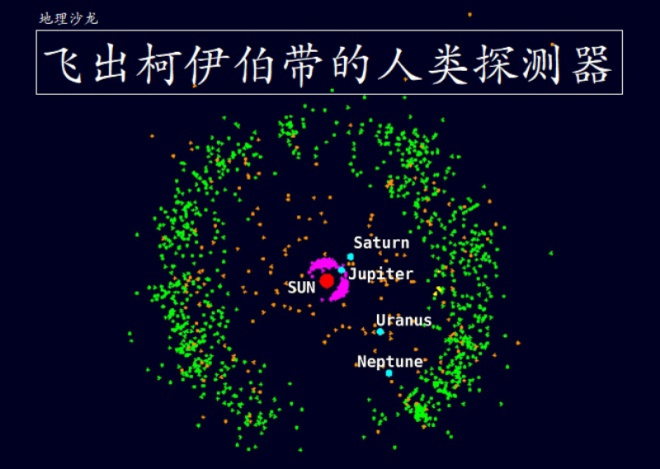
A human probe flying out of the Kuiper belt
Another dense area of celestial bodies is the"Kuiper belt"located outside the orbit of Neptune.The Kuiper belt is about 30 astronomical units away from the sun,that is,about 4.5 billion kilometers away from the sun.With the deepening of human exploration of the Kuiper belt,more and more Kuiper Belt objects have been discovered by us.At present,the main celestial bodies in the Kuiper belt include Pluto,Charon,ornithus,and Pius.

Solar system asteroid belt and Kuiper belt
Because the Kuiper belt is located outside the orbit of Neptune,although it is not the boundary of the solar system,human beings know little about the space beyond the Kuiper belt.To a certain extent,the Kuiper belt can be regarded as the edge of the solar system.So,what human probes have flown into the Kuiper belt so far?So far,there are five human probes flying into the Kuiper belt,namely Pioneer 10,Pioneer 11,Voyager 2,Voyager 1 and new horizons.
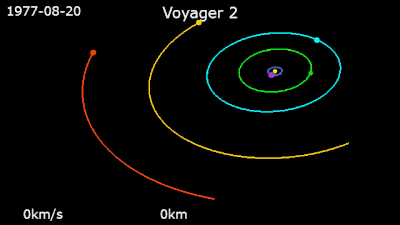
Five detectors flying out of the Kuiper belt
Pioneer 10 was a probe launched by NASA on March 2,1972.It was the first spacecraft to fly over the asteroid belt and the first probe to observe Jupiter at close range.On December 3,1973,it sent back a group of photos of Jupiter.In June 1983,Pioneer 10 flew over the orbit of Neptune and entered the Kuiper belt.After that,the probe drove to the star"aldeban"68 light-years away from the earth according to the inertia.The last signal of Pioneer 10 was received on January 22,2003.
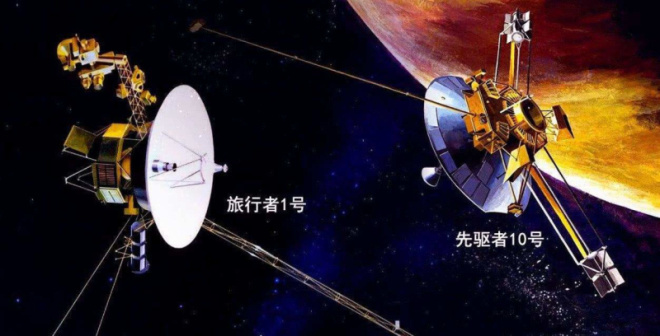
Voyager 1 and Pioneer 10 probes
Pioneer 11 was a probe launched by NASA on April 6,1973,and was also the first spacecraft to explore Saturn and its rings.Pioneer 11 took advantage of Jupiter's strong gravity to change its orbit and flew to Saturn.Then it flew to the deep solar system along Saturn's escape orbit.The operation of the probe and the telemetry data were terminated on September 30,1995.At present,Pioneer 11 is advancing toward the constellation Aquila at a rate of 2.5 astronomical units per year and will arrive there in 4 million years.
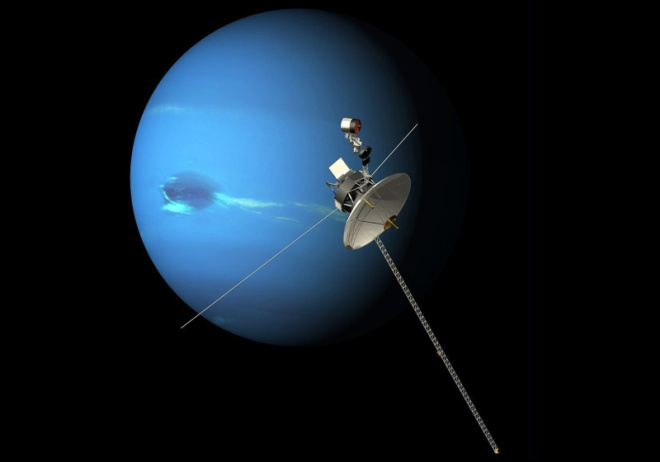
Neptune and Voyager 2
Voyager 2 was a probe launched by NASA on August 20,1977.Voyager 2 first approached Saturn through Titan's gravitational catapult.Voyager 2 then flew to Uranus and Neptune,passed through Uranus in 1986,explored Neptune in 1989,and then entered the Kuiper belt.On December 10,2018,the Voyager 2 probe has left the solar wind layer,becoming the second probe to enter interstellar space.
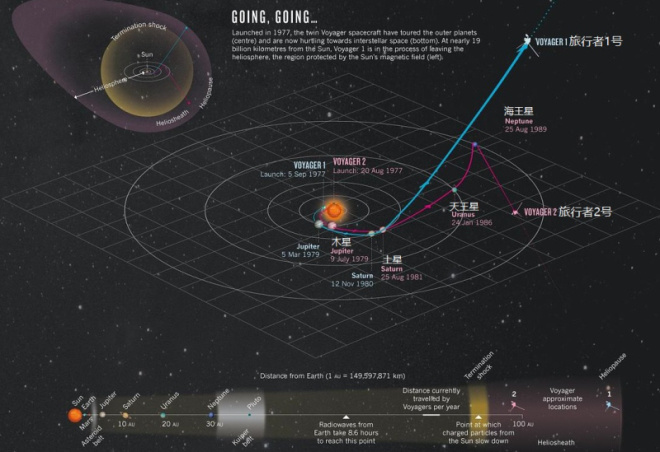
Trajectory map of Voyager 2
Voyager 1 is a probe launched by NASA on September 5,1977.Voyager 1 has also explored Jupiter and Saturn.It is the first spacecraft to provide high-resolution images of Jupiter's satellites.Since then,the probe visited Saturn and its moons in 1980 and provided detailed photos.When Voyager 1 was approaching Titan,it was affected by gravity and changed its orbit,so it could not continue to explore Uranus and Neptune.
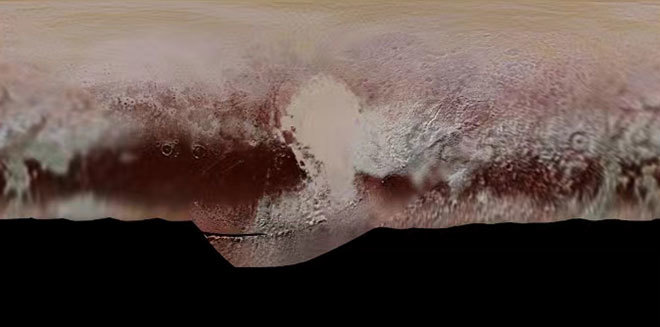
Trajectories of Voyager 1 and Voyager 2
Therefore,it can only terminate the planetary exploration mission,enter the Kuiper belt,and fly to the depths of the solar system.As of October 23,2019,Voyager 1 is in the space 21.1 billion kilometers away from the sun.Voyager 1 carries three nuclear batteries,which can ensure that it will continue to fly until 2025.Once the batteries are exhausted,Voyager 1 will continue to fly to the center of the galaxy.Voyager 1 is one of the most distant probes launched by human beings.
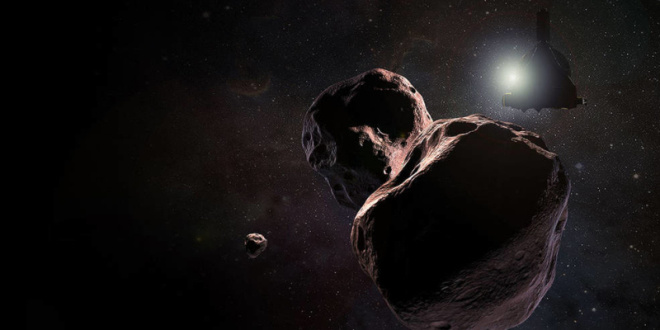
The global color map of Pluto taken by New Horizons in July 2015
New horizons is a probe launched by NASA on January 19,2006,also known as the new horizon probe.The main mission of new horizons is to detect Pluto and its satellite(Charon)in the Kuiper belt of the solar system.In addition,it will also detect asteroid groups in the Kuiper belt.New horizons flew over Pluto on July 14,2015,becoming the fifth probe to fly over Neptune's orbit.The new horizons probe is the fastest spacecraft launched by mankind so far.In January 2019,the new horizons probe flew over an asteroid named"Tianya Haijiao",about 6.4 billion kilometers away from the earth.
"New horizon"spacecraft flew over the Kuiper belt(hypothetical)
Next page

